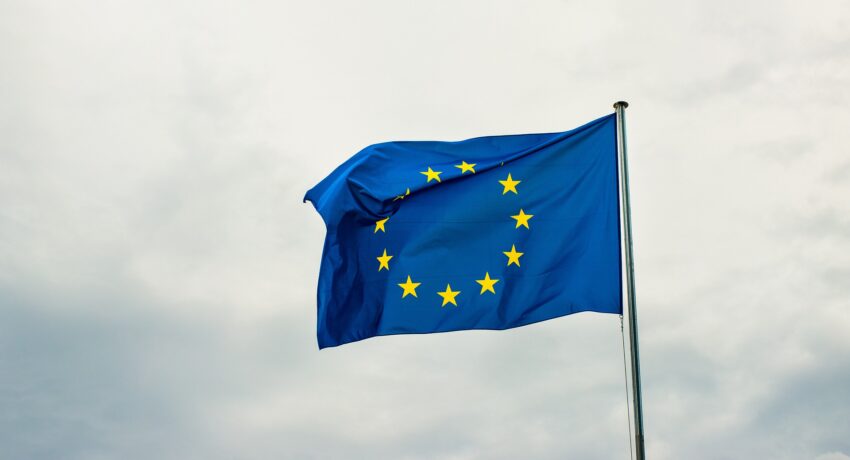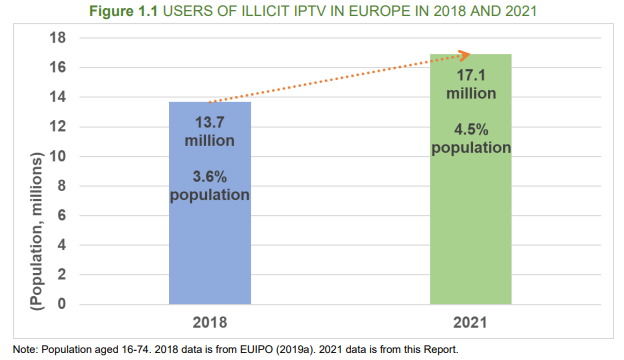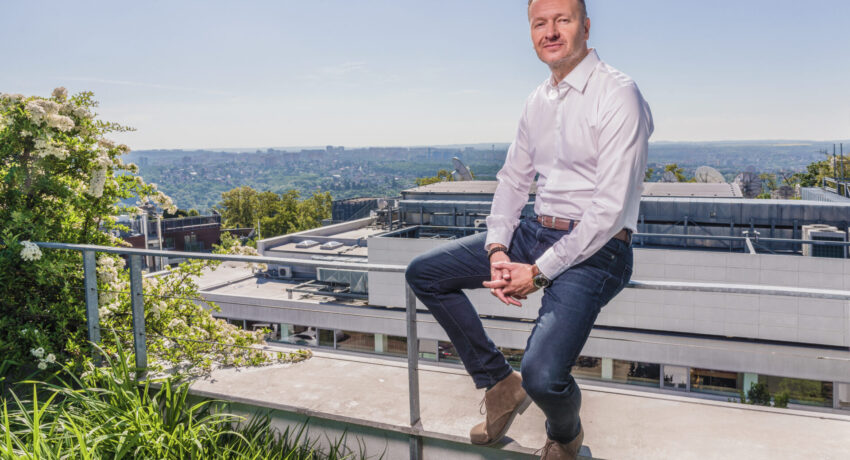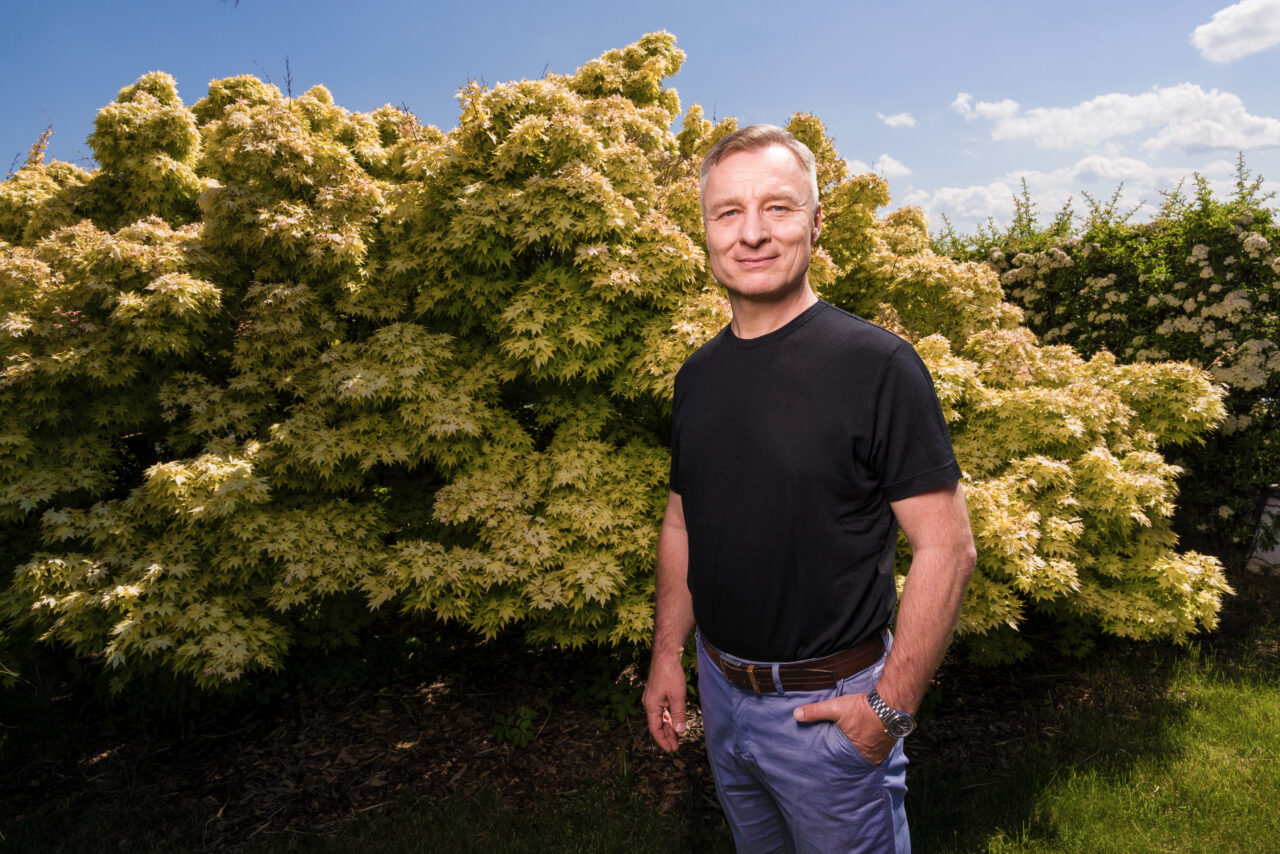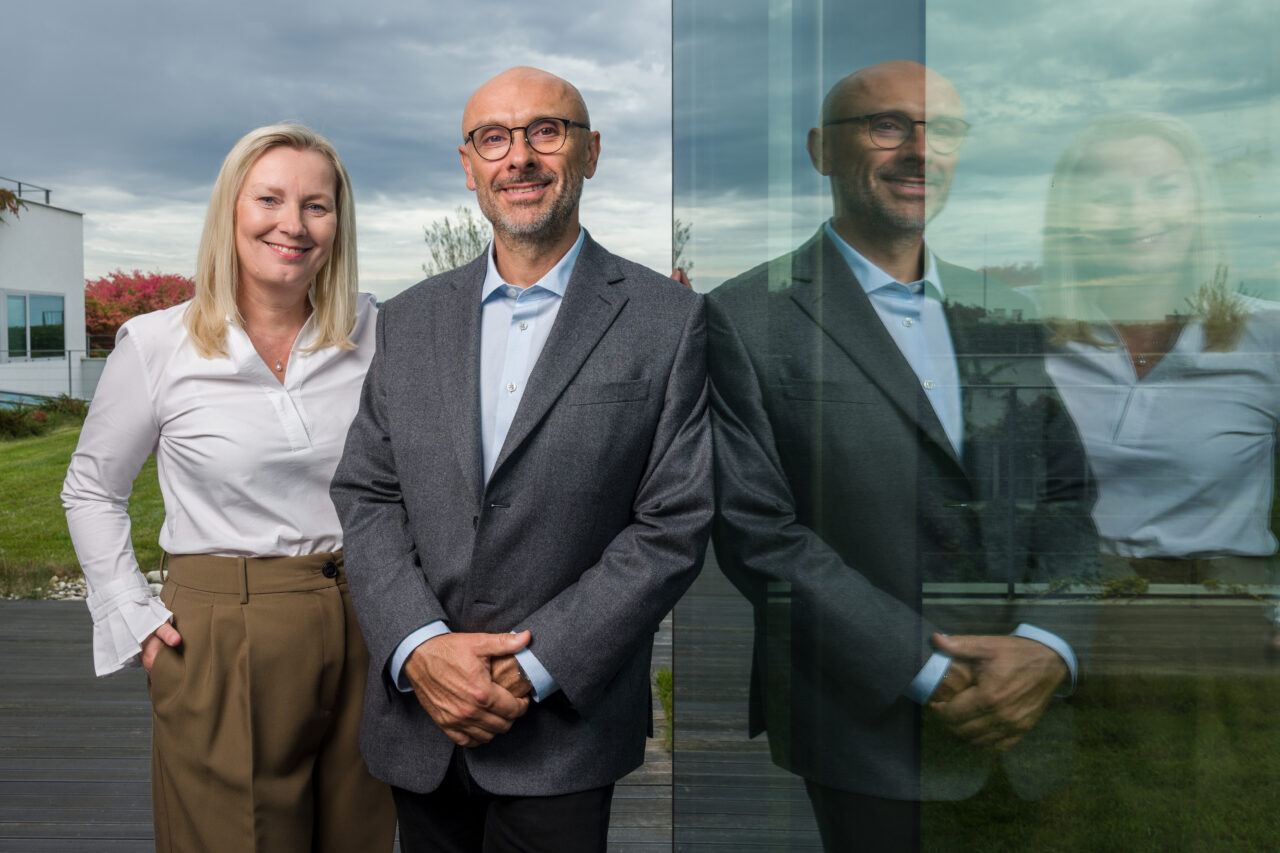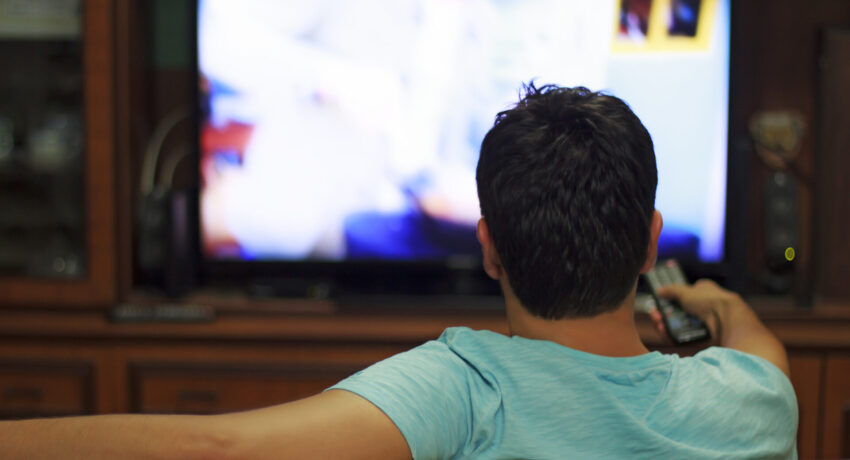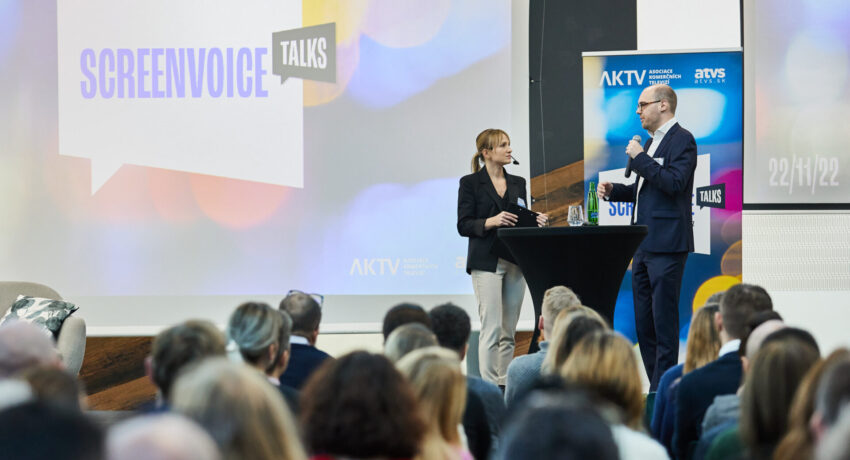Daniel Grunt will be CEO of TV Nova from January. Here is an interview he gave for the print edition of Lupa 3.0
Daniel Grunt is behind the development of Nova TV’s digital activities, including the Voyo app. The experienced media manager had already led the internet division at the Barrandov headquarters of the commercial station but then he left for the competitor Prima where he spent almost eight years. He returned to Nova in 2021 after it was taken over by PPF. This financial group required the management to wake up the somewhat sleepy, inertia-driven TV station. Grunt is not only responsible for Nova’s internet strategy but also manages the digital strategy of CME, Nova’s parent media group. He is therefore in regular contact with colleagues in other countries where CME owns TV stations. As of January 2023, he will move to a new position: he will be CEO of TV Nova.
What are the pillars of Nova TV’s digital activities?
There are three key ones. The first, which we pay the most attention and investment to, is the paid service Voyo. It is the backbone of CME’s digital transformation in all the countries where we operate. It is incorporated in the structure of TV stations and almost all teams. It automatically transforms the entire company. Another pillar is the ad-supported video archive, which was split between Nova.cz and Novaplus.cz in the past. This summer, we have merged them back together and now there is just Nova.cz. And the third pillar is news on TN.cz.
What about other stations in the CME group?
Voyo is the biggest priority in the whole CME. The paid video service is complemented by a free ad-supported video archive. This is the case in all stations except Slovenia. In Slovenia and Romania, there are historically more magazine services. During the first period I was working in Nova, these services made sense from a business perspective. But nowadays such sites are dependent on display advertising the value of which is steadily going down, so it does not make sense anymore. We have only kept magazines that still generate significant sums of money. Plus online news. In all countries, we are starting to focus more on sports. With the sports rights acquisitions, we have a lot of content that we can use.
What will be on Nova’s website?
We will focus on content related to our shows, faces and topics we promote on TV. We are not going to make microsites for every show. Rather, it will be a section dedicated to that show, with an archive of full episodes, and accompanying bonus material that the team collects during the course of filming. Extensive content does very well for reality shows such as Survivor. You can work with it for a long time and it still works well. It is not disposable content that you post on the networks and nobody comes back to. It is good for search engines.
Will you direct people from there to Voyo to pay for watching more content?
We make TV content available to Voyo subscribers seven days in advance and without ads. Then it goes to TV from where it continues to the archive on Nova.cz. There, people can watch shows for two weeks with ads. And finally, we put them back into the paid archive on Voyo. We play with and monetise value added. You pay to watch the show earlier, in higher quality and without ads. If you do not want to pay a monthly subscription, you watch it with a time-shift, but with ads.
But you also place bonus content of your shows to other platforms, such as Stream.cz. How does this fit into the described strategy?
The short content has three main functions. The first one is monetisation: we want to use it for video advertising, which largely feeds digital services. But the second and third reason we have it is to support Voyo and linear TV. So it is important for us to have maximum reach so that as many people as possible can access the content and make some kind of attachment to it. Then they will watch it on Voyo or on linear TV.
Voyo is an international brand. Can your colleagues abroad use it at their discretion?
In Slovenia, for example, they are pretty much independent because they have been developing Voyo throughout its existence. They monetise all the shows through it. It may be a small market with two million inhabitants but they have developed the service. In all the other markets, Voyo’s curve has been flat for a long time, it has not moved for maybe ten years. When I joined Nova, we decided to focus on the Czech Republic and Slovakia rather than pursuing everything at once. We will find out what works and once we learn that we will start with the other countries. We have had a very successful start in the Czech Republic and Slovakia. We will focus more on Romania later this year. Then it is just Croatia and Bulgaria, which will be next year’s business.
What about promotion?
The definition of brand and product is central. Individual states have a free hand in soft brand extension and communication. Each nation has its own specifics, this is also seen in the content strategy. The more you are in the south-east, the more soap operas and sports you have. We seek to control the core, i.e. what Voyo is, what it looks like and how it is profiled, but the demographic targeting and content policy may differ slightly. In any market, Voyo logically has to fit somewhere where there is room for growth.
Where does it fit in the Czech Republic, especially compared to global platforms?
Voyo is the strongest source of local content. In every country where CME operates it is supposed to be the strongest first-choice service when you want to see quality local movies, TV series, reality shows, and anything else. We have no ambition to compete with Netflix or Disney+ because we will never have their budgets. We are the number one local service in every country, except Bulgaria, where we are number two.
You stress that the content should be of high quality. What do you mean by that?
We push for premium services. Voyo, as we now define it and as it has started to develop in the Czech Republic and Slovakia, has a high production value. The content we shoot for Voyo Originály is more expensive than the content we shoot for prime time TV Nova. It also has to do with the choice of topics. It is the premium product in the entire portfolio of the media house.
The world’s film studios are gradually launching their own services where they exclusively host their production. Does this make it more difficult to get content for Voyo?
This applies not only to VOD services but also to licensing films for local TV. Getting content from groups such as Disney is becoming increasingly difficult. They have decided to keep the content only with themselves. It only encourages us to emphasise the local aspect. I am not saying that we do not have high quality acquisitions but we have other sources than the American film studios. Scandinavian crime films, for example, work very well for us. We have quite a lot of interesting UK series from the BBC and ITV.
Who typically subscribes to Voyo?
Households and individuals from young people in their thirties to older 40-somethings. Most of the people watching Voyo are women, for example, women with children. A lot of users use the account to its full potential, all five devices, often watching simultaneously. That is why I say households rather than families because these can be childless households or multiple people watching together. On average, they watch over 12 hours of content per week. According to various research studies we have had done, Voyo has the highest proportion of people who watch daily or multiple times a week compared to other services in the market. And logically, because you have to pay for the service, Voyo also has a higher socio-economic category of viewers compared to TV. Their education is primarily high school and university.
What is the biggest success and how do you define it?
We track the number of views but it is not a key metric for me. The most important one is the number of paying accounts, and we set annual goals for each team based on that. Right after that, the time watched weekly is important to me. That tells me whether people are happy with the service or not. If it starts to drop, we start to address it and we get nervous. There is a proportion that the less you use the service, the more likely you are to leave it. All Voyo Originály work extremely well for us. And the series Ordinace v růžové zahradě. It helped us that we had the courage to move it from linear TV to Voyo in the autumn of 2021 where it still had from 900 thousand to a million viewers on a single broadcast day. It showed the market that we were serious. The quality, length or cast has not declined, the series is still the same. Rather, it has got a second wind. Another thing that works is the previews of the key shows that work well on the main Nova channel. Some viewers are more sophisticated, they pay extra to see the content earlier and without ads. And there is also the big mix of the library that works well, we have clearly the most Czech films on the market, about 750.
It has been repeatedly discussed whether domestic TV stations should join forces and create something like Czechflix. Is it passé now that each group has announced its own solution?
Theoretically, it is possible that in the medium term this can happen. But I am sceptical. There is the question of how to implement such a Czechflix. How do you do it practically? Whose platform will it be? Who will have what shares? How will the revenue be distributed? And how will the share that each TV station has to contribute be determined? How will you calculate the value of the content? These practical aspects are very important to get something like this off the ground. You must also not forget that on a single platform you are bringing together entities that are competitors and proudly compete in all other areas. And suddenly they have to come to an agreement in one place. Nowhere in the world, be it Britbox, Joyn or Salto, does this work properly. There is always a grand announcement and a budget, the plan looks great from the outside and from afar, but then each of the companies involved still have their own platform anyway. And none of them have the courage to discontinue theirs and fully focus on the common one.
Source: lupa.cz

